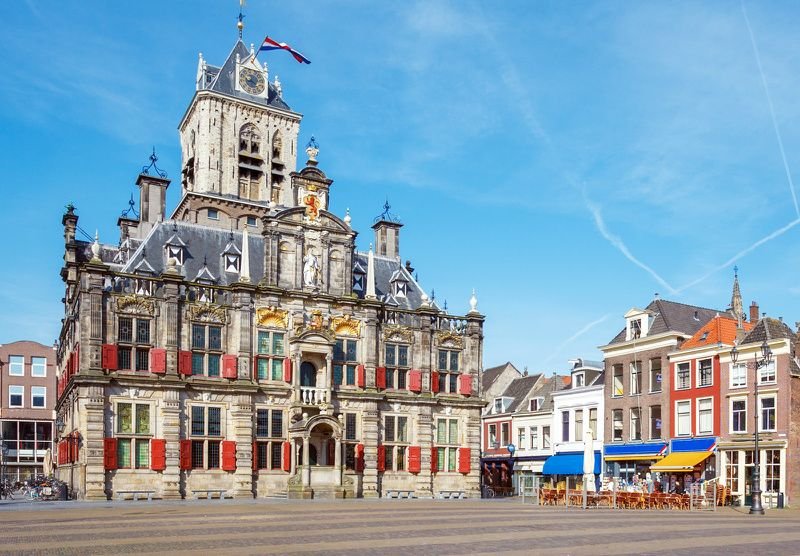Rome by Vespa: Classic Rome Tour
Enjoy Rome by Vespa on this Classic Rome Tour! Ride a Vespa through the busy streets of Rome like a Roman! Hold on tight as your private driver and guide take you on a half-day tour of the highlights of the Eternal City on a vintage scooter. As you navigate traffic circles and winding streets, stop to take in Imperial monuments and baroque piazzas up close. Learn about Rome’s past, present, and future by taking a guided tour that reveals some of the city’s best-kept secrets.
Highlights
- Travel like the Romans did: in style and comfort.
- Discover hidden gems and historical landmarks.
- Take a break and explore the Trevi Fountain and the Colosseum on foot.
- A private guide will provide you with individualized service
Rome by Vespa: Classic Rome Tour
Itinerary
Piazza Venezia
The stunning Piazza is the beating heart of contemporary Rome. The magnificent quinta that shapes this iconic scene is the enormous Vittoriano, Europe’s largest monument.
Colosseum
In ancient times, the Colosseum was known as the Flavian Amphitheater, and it remains one of the world’s most impressive structures today. More than 6 million people go there each year. Emperor Vespasian ordered the construction of the Colosseum to begin in AD 72, and his son Titus finished it in AD 80.
When it was finished, the Colosseum was the largest amphitheater in Roman history, measuring 188 meters long, 156 meters wide, and 57 meters high.
A massive retractable velarium provided shade for the 50,000 people who could fit in the amphitheater’s seats (awning). Hundreds of Roman sailors were needed to manipulate the rigging that extended and retracted the velarium, which was supported by corbels built into the Colosseum’s attic story.
Mock naval engagements, as well as thousands of hand-to-hand combats between gladiators, were held in the Colosseum, as were battles between humans and animals.
Circus Maximus
It was one of the largest sports arenas ever built when the Circus Maximus, Roman hippodrome, was built. Structure in the shape of a U, with seating on three sides and an arena in the middle divided by a low wall along the circumference of that.
Built in the first century BC for a capacity of 150,000 spectators during the reign of Julius Caesar. Later emperors increased its size, and it peaked at about 2,000 by 600 feet (610 by 190 meters) under Constantine (4th century AD), with a seating capacity of perhaps 250,000, which was greater than any subsequent stadium. The Circus Maximus is reminiscent of the setting in the Ben Hur film. The central spine was flanked by two massive Egyptian obelisks that had been transported from Africa.
Terme di Caracalla
Emperor Septimius Severus began construction in AD 206 and Emperor Caracalla finished it in AD 216, making it one of Rome’s many public baths. The Baths of Caracalla, which were built to accommodate 1,600 bathers, remained in use well into the 6th century AD.
Among the Roman bathhouse ruins, these are the most extensive and include a central block of large vaulted bath chambers, as well as courtyards and auxiliary rooms, all set within a garden with areas for exercise and games.
For the most part, bathing was done in one of three different rooms: the frigidarium, the caldarium, and the tepidarium. On either side of the frigidarium, there was the tepidarium. The great hall was vaulted with clerestory windows, similar to the naves of medieval churches in its design. There were also swimming pools that were outside. The interior was lavishly decorated with marble, sculpture, mosaics, frescoes, and other mediums.
Via Appia Antica
This famous ancient Roman road from Rome to southern Italy is known as the Appian Way (Latin: Via Appia). Appius Claudius, a censor, started the Appian Way in 312 BCE. In honor of the Appian Way, Horace and Statius dubbed it “queen of long-distance roads” (longarum regina viarum).
The Appian Way was such an important route for reaching the seaports of southern Italy, and thus Greece and the eastern Mediterranean, that it was overseen by a curator of praetorian rank during the Roman Empire. The road had an average width of 20 feet (6 meters) and a convex surface to help with drainage.
The road was built on heavy stone blocks that were mortared together and then covered with polygonal lava blocks that were perfectly aligned. Milestones and other inscriptions dot the Appian Way’s first few miles, which are flanked by a striking series of monuments.
Roman Walls
In the second half of the third century AD, Emperor Aurelian built the Aurelian Wall, a rampart around the city of Rome. Beginning with Emperor Aurelian and finishing under his successor Probus in the early 5th century, improvements were made under Emperor Honorius and restored by Theodoric the Great in the 6th century. When it was first built, it was made of tufa concrete with triangular bricks for the facade.
It had a length of about 12.5 miles (20 km) and a thickness of about 4 meters (13 feet) Flavius Stilicho, the great general of Emperor Honorius, raised the walls to a height of 35 feet (10.6 m) and added 380 towers spaced about 100 feet (30 m) apart to reinforce them. Originally, the walls were only 24 feet (7.2 m) high. The circuit had a total of 16 gates. There’s still a lot of the wall left.
Piramide Cestia
The only ancient Egyptian-style pyramid still standing is the Pyramid of Rome. The 36-meter-tall monument was erected in the first century BC as a tomb for Caius Cestius, a prominent Roman magistrate. Three centuries later, the Aurelian Walls included the Pyramid of Cestius, whose white marble façade bears an inscription stating that it was built in 330 days.
Testaccio
Testaccio is a nearby neighborhood where you can get coffee, gelato, and snacks. The Emporium port, where most of Rome’s food supply entered the city, was located in this area during ancient times. Amphorae (terracotta containers) carried essential foods like olive oil and grains to a dump where they were emptied and dumped.
In the distance, you can still make out the ancient Monte dei Cocci (also known as Monte Testaccio) with its 53 million broken amphorae. When Europe’s largest abattoir finally opened in Testaccio a few centuries later, it sparked the popularity of rustic Roman dishes like trippa alla romana and stew of oxtail.
The first football pitch of the city’s favored team, AS Roma, was built in this neighborhood, and locals still gather here to watch a game. The area around Testaccio is now known for having some of Rome’s best restaurants. That’s more appealing to us than picturesque piazzas and cobblestoned streets.
Giardino degli Aranci
The Orange Garden of Rome, perched atop the Aventine Hill just above the Tiber, is a city favorite. This lovely park has an area of nearly 8,000 square meters and offers a view of Rome that is only rivaled by that of Janiculum Hill.
An oasis of calm and beauty, the orange-scented garden is a favorite place to watch the sunset over the city. Take a seat on the charming terrace that overlooks the Tiber River and take in the sun setting over the dome of St. Peter’s. This charming little nook is a locals’ favorite.
Basilica di Santa Sabina
Little has changed in the Santa Sabina Basilica since the 5th century except for the magnificent matching Corinthian columns that line the interior. These columns were rescued from a defunct pagan temple or palace by Christian charity. Possibly (but not positively) on the site of the original Titulus Sabinae, a church was erected in the 5th century.
There were originally private homes or commercial meeting-halls in Rome where Christian congregations met before becoming the tituli (the so-called house-churches). The Aventine hill was a wealthy neighborhood in the first century AD, home to several significant temples and patrician residences (rather like its status nowadays). According to legend, Sabina was a well-to-do Christian woman who lived on the crest of a hill overlooking the river.
Campo de’ Fiori
The name means “flower field,” and the piazza is now engulfed by Rome’s most famous market during the day. Locals flock to the area at night for aperitivo and cocktails. Campo de’ Fiori is right in the middle of all the action in the city of Rome. The Piazza Navona, the Pantheon, the Via del Corso, Trastevere, and the Colosseum can all be reached on foot from here.
You could say it’s a great area to be in if you’re in a hurry to see all that Rome has to offer! Campo is a vibrant neighborhood with a wide range of things to see and do. Campo has just about everything: an outdoor market, shops, restaurants, bars, cafes, museums, churches, and monuments are just a few of the things you’ll find in the neighborhood. It is a bustling market area by day and a great spot to unwind and eat in the evenings in Campo de Fiori.
Palatine Hill
The Palatine was the site of Rome’s founding, and archaeologists have found everything from prehistoric artifacts to imperial palace ruins there. Romulus and Remus, the twin Mars sons who founded Rome, were said to have been abandoned as infants on the floodplain of the Tiber and then dumped at the base of Mount Palatine by the receding waters.
According to legend, they were raised by a shepherd on the Palatine’s slopes and fed by a she-wolf who lived in Lupercal, a cave on the Palatine’s slopes, where Rome grew from and around it. The Palatine was home to numerous temples and mansions of the city’s nobility during the Republican era and the Roman Empire. It was here that Augustus, the first emperor, was born and where Domitian had architect Rabirius reshape the landscape to suit his needs.







